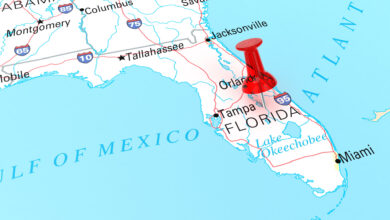We’re having some growing pains
Words of Wisdom – by Brad Roger
We don’t want Ocala to become another Orlando. Oh, if I had a dollar for every time I’ve heard those words over the nearly three decades I’ve lived in Ocala.
Yet here we are. Perennially one of America’s 10 fastest growing communities. One of America’s favorite places to retire. Smack in the middle of a state that is welcoming nearly 1,000 new residents every day. And there’s no sign of it letting up.
Demographers predict that metro Ocala – that’s all of Marion County — will hit 400,000 people next year, 500,000 in 2040 and 600,000 in 2050. And if you combine the populations of The Villages and greater Ocala, the region is expected to have more than 1 million residents by 2030, about the same population as metropolitan Orlando in 1990.
Lord, please, we don’t want to become another Orlando.
The thing about growth, though, is so many consider it good, economically and socially.
I remember Steve Purvis, a former Ocala hospital executive, declaring in a speech as chairman of the defunct Economic Development Corp., “If you aren’t growing, you’re dying.” The remark drew thunderous applause from the EDC crowd.
I get it. If you’re growing, especially at the rate Ocala is, there’s money to be made. More people mean more customers. More customers mean more sales. More sales mean more income.
It also means more and better restaurants, stores, entertainment options and job opportunities. Oh, and wages are getting better, too – yes, wage growth is another category in which Ocala is a national leader.
Consider this: Some 194 people are moving to Ocala/Marion County every week.
What does 194 new residents a week mean? The average household here has 2.4 residents, according to the Census Bureau. To accommodate the influx of new folks requires 80 dwellings – many of them new ones. And each of those homes will need appliances, furniture and a host of other household necessities and amenities, inside and out.
Then there are the restaurants, retail outlets and myriad small businesses that all benefit from new residents, that is, new customers.
Yes, as the growth sector rejoices, it’s easy to understand why.
Growth, though, has its downsides. Look at our roads. Crowded and getting more so. Look at our schools. Overcrowded and no money to build new ones. Look at our service sector. Tried getting a contractor to do some work lately? Meanwhile, the county fire chief says we need 10 new fire stations – today.
And I won’t even get into the impact on water and our picture-postcard-perfect countryside.
Craig Curry is a lifelong Ocalan. He has seen greater Ocala grow from 38,000 people when he was born in the early 1950’s to 385,000 people today. That’s a tenfold increase, folks.
Curry is also chairman of the Marion County Commission. So, he hears about growth – a lot.
“I get emails every day that say, ‘You’ve got to stop growth now!,’” he told me. “… Well, the County Commission does not have that power. We can’t stop people from moving to Marion County.”
Curry is well aware of the very real threats to the environment, indeed to the way of life so many relish here.
He said the emphasis on the commission is keeping new growth within the Urban Service Boundary that encircles already developed areas around Ocala. That’s where growth is planned, based on long-term city and county comprehensive land use plans.
“Nobody on the County Commission wants us to become another Orlando,” Curry said. “But we’re growing and we’re having some growing pains.”
Those growing pains are likely to continue for the distant future.
Yes, people are moving here for the same reasons I and tens of thousands of others have moved to Ocala over the past two generations – its beauty, its weather, its affordability, its horse culture, its location, its opportunities.
How do you shut the gate to others seeking all that? You can’t.
It’s unlikely Ocala will ever be another Orlando, even if we’re giving it our best shot. In the meantime, hold on to Commissioner Curry’s words: We’re growing and we’re having some growing pains.
Oh, and get used to them. They’re not going away anytime soon.






